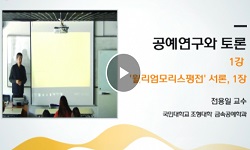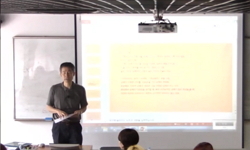This study tries to find out the origin, significance and style of pattern by examining gold leaf and embroidery Hwarot which have the unique pattern, color, texture. First Hwarot was made for the wedding of Princess Bokon, second daughter of Soonjo (...
http://chineseinput.net/에서 pinyin(병음)방식으로 중국어를 변환할 수 있습니다.
변환된 중국어를 복사하여 사용하시면 됩니다.
- 中文 을 입력하시려면 zhongwen을 입력하시고 space를누르시면됩니다.
- 北京 을 입력하시려면 beijing을 입력하시고 space를 누르시면 됩니다.
https://www.riss.kr/link?id=A102059719
- 저자
- 발행기관
- 학술지명
- 권호사항
-
발행연도
2016
-
작성언어
-
-
주제어
활옷 ; 복온공주 ; 시카고만국박람회 ; 자수공예 ; 금박공예 ; 화속문 ; 대조단원문 ; Hwarot ; Princess Beokon ; Chicago Universal Expositions ; embroidery ; craft ; gold leaf craft ; Hwasokmun ; Daejodanwonmon
-
KDC
600
-
등재정보
KCI등재
-
자료형태
학술저널
-
수록면
80-107(28쪽)
- 제공처
-
0
상세조회 -
0
다운로드
부가정보
다국어 초록 (Multilingual Abstract)
This study tries to find out the origin, significance and style of pattern by examining gold leaf and embroidery Hwarot which have the unique pattern, color, texture. First Hwarot was made for the wedding of Princess Bokon, second daughter of Soonjo (23rd King of Joseon Dynasty). Second Hwarot is in the collection of the Field Museum, Chicago. (Relic No. 33157) The sketch of embroidery for Hwarot used at the wedding of Princess Deokon (1822-1844), which is similar to above two, will also be examined. Patterns of the gold leaf and embroidery Hwarot symbolize a good fortune, a stipend, a long life, authority, and idleness, which were highly appreciated in Confucian ideology. Most patterns can be categorized into Gilsangmun. They were in a fashion through several era and dynasties. For example, embroidery designs such as hwasokmun (花束紋 - the pattern of a bunch of flowers) are very characteristic. Hwasokmun is a pattern of two or three flowers, which seem to be from the same root or clouds. Such design composition can be also found in patterns of clothes, hyungbae (embroidered insignia on the breast and the back of an official robe), and fabrics from Dingling (定陵, a tomb of the Wanli Emperor, Ming Dynasty). Its origin seems to be a Jeoljimun (折枝紋, the pattern of chopped branches) in the Hwajohwa (花鳥畵). Hwajohwa was prevalent in the garden of palace Song and Ming Dynasty. Hwasokmun developed into Payeonmun (把蓮紋) in the blue and white ware which was popular in Qing Dynasty. Special royal craft technique was used for making gold leaf embroidery crafts. Ordinary people could not use gold leaf embroidery because gold leaf was produced by striking pure gold. The technique of Cheopkkeum (貼金, fixing gold leaf on texture) is lost. Nowadays, craftsmen just paste gold leaf on texture. Sticking patterns on the clothes is the final step in the process of gold leaf embroidery. Various types of embroidery needlework have developed from four types of technology system. In this gold leaf embroidered Hwarot, characteristics of palace embroidery is conspicuous. It is prominent to use both color thread and gold thread. It is also prominent to use soksil. Moreover, the effect of jarisu and jaryeonsu are outstanding. Specifically, Jingeomsu embroidery needlework, a method which divides space horizontally/vertically and then sews gold thread, is the best palace embroidery. It expresses abundance of the beauty of color with a silk thread which sheds a dim glow. Gold leaf and embroidery Hwarot is the record of life culture in the palace during 19th century Joseon. The style of Hwarot can be applied to develop creative items in fashion, architecture, design, craft industry. It can also be succeeded to new cultural items for the world market. This study can be expanded to a comparative study on symbolism, origin, original technology and changes of patterns used in royal wedding costume throughout the world.
동일학술지(권/호) 다른 논문
-
- 한국동양예술학회
- 정정옥 ( Jeong Jeongok )
- 2016
- KCI등재
-
이색의 `천인무간사상`을 통해 본 한국 자연미에 대한 고찰
- 한국동양예술학회
- 조병수 ( Cho Byung Soo )
- 2016
- KCI등재
-
공연포스터의 분장이미지 인지도, 선호도 및 공연관람의도에 관한 연구
- 한국동양예술학회
- 채송화 ( Chai Song Wha )
- 2016
- KCI등재
-
소식(蘇軾) 회화 창작 이론의 흉중성죽(胸中成竹) 고찰 -문동(文同) 관련 시문(詩文)을 중심으로-
- 한국동양예술학회
- 강교희 ( Kang Kyo Hui )
- 2016
- KCI등재






 eArticle
eArticle






